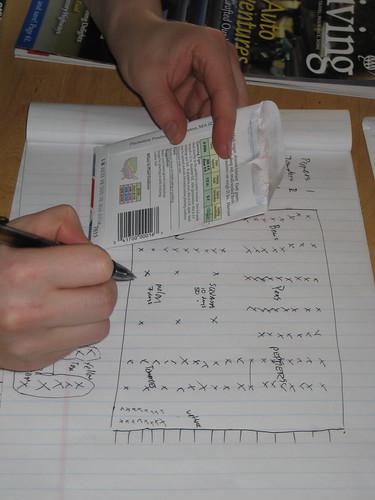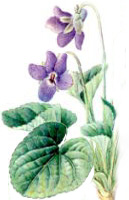Often you find the most interesting things in the small booths of a fair. Last year I found a hand lotion made of slug slime that was extremely effective. I do regret that I didn't buy a tin or two since the seller didn't attend Nordic Gardens this year. However she did have some similarities with the find of this year - they are both into slugs. This year I found a company called MicroLivestock Inc.
Since I'm planning an aquapnic system I've already been into micro livestock. It's pretty simple; it's a term for animals like rabbits, guinea pigs and slugs etc. that are small enough to be bread in small spaces and have edible (ie. tasty) flesh. Sometimes pigs are added to this category, but I think this is to stretch things a bit too far.
MicroLivestock Inc. are taking small cattle to a new level though - they are using genetic modification. Their big 'star product' is a variety of the spanish slug - their first successful designer animal - they've designed to A. relieve the nature of the pest and B. give us protein that is easy to catch and tastes well. The manipulated gene is dominant which means that if you release a batch of designer slugs into your garden they'll pass on their traits to comming killer slug generations.
And what are the traits? Well, they don't have the tough slime ordinary spanish slugs have - the designer slugs have normal slug slime, which make it easier for predators to eat them. The slug is easy to spot, is active in daytime and tastes good. No, it doesn't taste like chicken, the company has bet their hats on beef. I was treated to a few pieces of "snail jerky" they sold in their boot. I'm not fond of beef jerky (beef jerky is not a part of swedish food culture, and hasn't immigrated like chips and hamburgers), so I can't tell if the taste was good or not, but the idea was good. The slugs are easy to bread indoors, easy to slaughter and "self destruct" if they happen to run away into the wild. (You should have seen the faces of the boot demonstrators when I hinted that the last trait may not work to a hundred percent when tested in real life.)
But MicroLivestock wasn't all about slugs, they are working on micro cattle of different kinds. You should have seen the vid they were showing in the boot! A mini collie of the smallest kind were running around chasing something that on first sight looked like giant guinea pigs and then revealed to be sheep in the same scale as the collie. They weren't gene manipulated though, the company had tracked down some smallbuilt heirloom races and breaded them down in scale untill they reached the right size. The advantage of this method was that they could reach a stable variety relatively fast. (When you use gene manipulation you have to add some check up generations to see if it has some side effects - in many cases the manipulation weakens the general constitution of the animals.)
If the mini cows wouldn't work out the company is working with milk giving english lops (a giant rabbit breed). The plan is to not only make the milk taste like cow milk, but also to hamper the mechanism that makes the milk dry up when the rabbit's offspring have grown up. This way you don't have to stress the female with repeated births. (I still think this chimerism will be too tough to swallow for animal lovers.)
Gene manipulated food isn't popular right now, so I have to say it's brave to set up a booth at the biggest garden fair in Scandinavia. If you want to know more about the company you can take a look at their home page.
[Ed. April 2nd; as you may have realised this post was the Indoor Gardener April Fool's joke of the year. There is no MicroLivestock Inc. However, the hand lotion made from slug slime do exist...]
Showing posts with label april fool. Show all posts
Showing posts with label april fool. Show all posts
Wednesday, April 01, 2009
Tuesday, April 01, 2008
Swedish gardening standards

This photo is called "Garden planning" and was taken by Daniel Morrison. You find his flickrprofile and more pictures here.
To follow up a thought after the last post I took a look at the homepage of Svenska Standardiseringsinstutet (Swedish Standards Institute). SIS is mostly dealing with industrial standards and coordination with ISO and european ones, but they are also diving into every subject that might need some 'common language'. Some years ago they did, for example, issue standards on swedish Christmas by, among other things, publish guidelines for paper, strings and meassurement of a christmas gift.
I did find a project for swedish gardens. It's a kind of top project with the goals to safeguard swedish interests in the european and international work for gardening standards as well as contribute to the process. The task is to be active in the following projects:
- Compost, composting and composting equipment
- Water pipes, drainage and sewers
- Water preservation
- Garden equipment
- Portable machines and pedestrian controlled machines
- Powered lawn and garden equipment
- National horticortural variation (There is a difference between a garden in Spain and one in northern Sweden. If I read the page correctly they are working for at least three national cultivated plants and three national decorative plants. The swedish plants should in this case be potatoes, carrots and redcurrants plus tulips, lilacs and rugosa rose.)
- Pest and disease control
- Garden design and decoration
When reading this I realise that swedes are more prone to anarchic behaviour than we think ourselves. Did we ever notice this in the constant flow of information? No. Will we care? No and yes; if we think the standards are wrong we will. Or perhaps even worse: if they are almost right ("Why rugosa rose? It shoulld be Rosa Majalis!"). Some will fight like the guidelines are compulsory laws (they are not) and others will blame everything on the EU.
Whatever happens you may be interested in checking out the international standards on our favourite way to spend time.
Subscribe to:
Posts (Atom)




